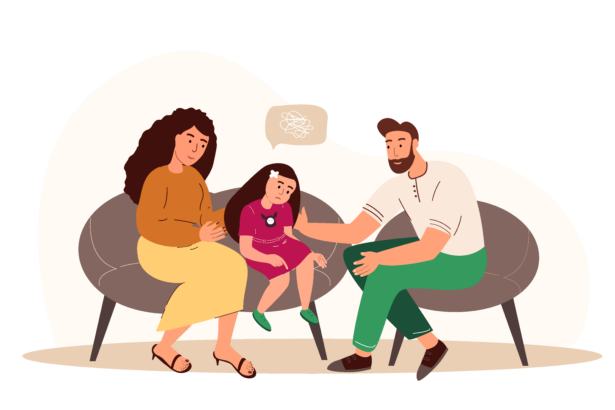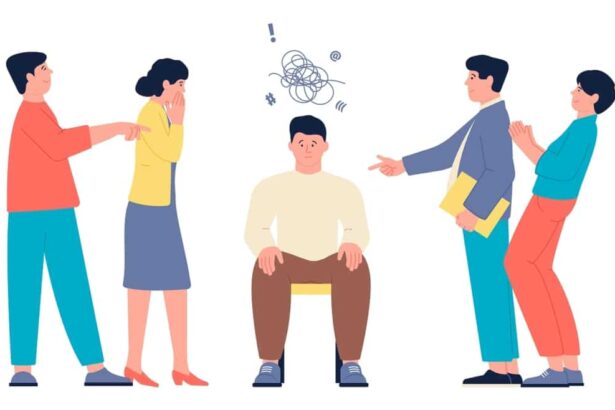My Inqiry question is, how do environemental factors impact people’s well-being? In order to fully understand the answer to this question, we must first understand the question, what role do social interactions within environments play in influencing well-being? Social interactions play a critical role within out lives, which is why it’s important to know their influence within our community and selves.
Social interactions within environments play a critical role in influencing well-being across various apects, emotional, psychological, and physical. These interactions can take place in different settings such as homes, workplaces, communities, and social spaces. (1) Humans are inherently social beings, seeking social interaction and connection from birth. Social bonds are crucial for survival, comfort, and emotional regulation through life. Supportive relationships are important to mental wellness, creating emotional resilience, reducing stress, and improving overall health. (2)
Studies show a strong connection between social lives of humans within their environemnt and better mental health, including lower rates of depression, anxiety, and psychological distress. Social support is also needed for recovery from mental illness and improving treatment outcomes. Meaningful social interactions go against stress, providing emotional support and a sense of belonging long term. Engaging with others, sharing experiences, and receiving validation enhance emotional resilience and help mediate life’s challenges. (2)

On the other hand, social isolation and loneliness are linked to negative mental health, like increased risk of depression, anxiety, etc. Long term loneliness can severely impact mental and physical health, leading to despair, low self-worth, and poor quality of life. Similarly, negative social interactions, or being a part of a negative environment long term can have the same effect. (3) Thankfully, addressing social isolation is good for mental health wellness. Therapy can help build coping mechanisms, improve self-esteem, and gradually expose people to social situations. Social connections go along with therapy, creating a strong approach to well-being. (2) Supportive networks and targeted therapy benefit those with social anxiety or loneliness. Likewise, social isolation worsens social anxiety and well-being by weakening individuals of needed social connections, underscoring the importance of tackling both issues for better mental health outcomes. (3)
Technology, when used in moderation and carefully, makes social connections easier with platforms for communication and community building through social media and virtual events. It also increases accessibility to mental health support through virtual therapy sessions. However, while technology can enhance social interactions and mental wellness, excessive use can lead to feelings of reduced face-to-face interactions, impacting relationship quality and wellness. (4)
Cultural norms and societal values also influence social connections and well-being. Cultures emphasize family ties and community support, enhancing well-being, which is a great way to not only positively improve the quality of social interactions, but also to enhance long term connection with like people. Embracing diversity and different cultures, while fostering empathy are essential for supporting everyone’s well-being within their environment. (5)

As we now know, building and nurturing social connections is crucial for mental well-being. The best ways to start creating these onnections within your environment is to look for shared interests at local events, clubs, gatherings. Attending social gatherings related to your hobbies to meet like-minded people is a great way to build the postive connections needed for good well-being. (6) Volunteering is also a great way to connect while giving back. Joining social groups or classes can also help expand your social circles. When initiating conversations, show genuine interest, practice active listening, ask questions, and sharing your experiences, you can improve not only your well-being, but other people’s as well. (7) Deepening relationships by investing time, planning get-togethers, being vulnerable, and offering support is always a great idea. Prioritize social interactions to set boundaries on screen time to reduce technology dependence for more face-to-face interactions, although both ways of interacting can be great. (8)
Overall, social connections are crucial for mental wellness, providing support, belonging, and resilience. Understanding societal influences on relationships and mental health is important. By advocating for inclusivity and building meaningful connections, we can create supportive communities for improved well-being. (7/8) In my next blog post, we will learn about how changes in the environment (pollution, climate change) affect well-being over time, order to fully understand how different environmental factors impact people’s well being. Thanks for reading!
Sources:
1.“Mental Health and Well-Being.” Copernicus Health Hub, health.hub.copernicus.eu/mental-health-and-well-being#:~:text=Social%20well%2Dbeing%3A%20The%20environment,belonging%2C%20and%20support%20social%20cohesion. Accessed 29 May 2024.
2.Admin. “The Role of Social Connections in Mental Wellness.” The New Hope MHCS, 19 Feb. 2024, www.thenewhopemhcs.com/the-role-of-social-connections-in-mental-wellness/.
3.“Understanding the Effects of Social Isolation on Mental Health.” School of Public Health, 22 May 2024, publichealth.tulane.edu/blog/effects-of-social-isolation-on-mental-health/.
4.KeyTech. “The Impact of Technology on Society: Positive and Negative Effects.” LinkedIn, 27 Mar. 2023, www.linkedin.com/pulse/impact-technology-society-positive-negative-effects-keytech-fi#:~:text=Positive%20Impacts%20of%20Technology%20on%20Society%3A&text=With%20the%20rise%20of%20social,information%20on%20virtually%20any%20topic.
5.“The Link between Culture and Wellbeing.” Selectability, www.selectability.com.au/the-link-between-culture-and-wellbeing/. Accessed 29 May 2024.
6.Building Community Connections, www.webjunction.org/content/dam/WebJunction/Documents/webJunction/Topics/smart-spaces/building-community-connections-guide.pdf. Accessed 30 May 2024.
7.“Making Long-Lasting Friendships.” BEN Support for Life, ben.org.uk/how-we-help/for-me/articles/making-long-lasting-friendships/. Accessed 29 May 2024.
8.“The Importance of Connections on Our Well-Being.” Berkeley Exec Ed, executive.berkeley.edu/thought-leadership/blog/importance-connections-our-well-being#:~:text=Connections%20can%20be%20just%20as,factors%20and%20boost%20life%20expectancy. Accessed 29 May 2024. 1.




Hey Perla! Amazing blog post! Your blog post offers an insightful exploration of how social interactions within various environments significantly impact well-being. I found it particularly interesting how you talked about how much of a critical role supportive relationships play in enhancing emotional resilience, reducing stress, and improving mental health outcomes.
For your future research, I found this article that may help.
https://www.ncbi.nlm.nih.gov/pmc/articles/PMC11121254/
It talks about the impacts green spaces have on public well being. I wish you all the best on the rest of your research and can’t wait to read your future posts!